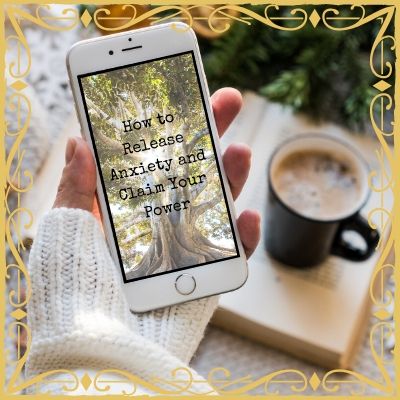
What if a Threshold isn’t a place that you cross, but a place that you pause? A place that transforms you?
With everything that has happened in the past few months, we are at a place of Threshold. I don’t know about you, but you can feel it in the air, in the energy of the people around you and in the collective consciousness. As the old “normal” crumbles (but is certainly fighting to stay), there is a sense of fear filled with expectation.
A Threshold. And one that is going to last months, not be crossed in a day.
But what the heck is a threshold?
I don’t know about you, but I grew up with the idea of Threshold being something that you crossed. For example “the husband carried his new wife across the threshold”, or on New Years Eve it was all about who would cross the threshold first?
According to Mirriam Webster dictionary:
A threshold is:
a) a plank, stone or piece of timber that lies under a door sill.
b) a gate or door.
c) the place or point of entering or beginning.
Often, when encountering thresholds, we talk as if our work is that of successfully “passing through” them. We speak of “making healthy transitions.” We seek out advice and support as we decide which thresholds to lean into and which to resist. The goal, it would seem, is figuring out how to travel forward in the right way. But what if we looked at it a different way?
“A threshold is a space to imagine a new way, and a new self. Not moving or pushing but sitting and cultivating… The goal is to allow you space and time to reflect on your past, present, and future. To imagine a new beginning…” Rev. Sara LaWall
Our Jewish siblings live with a heightened sense of threshold every day. Their practice of hanging mezuzahs at their doorways calls them to pause and be more intentional about what they want to bring with them and what they leave behind as they cross between their home and the world.
Imagine how your days might be different if you took a sacred pause at the doorway to your home and asked yourself, “What do I want to bring with me and what do I want to leave behind (or keep out) as I cross over?” How does my home, myself and my family need to be protected from the energy I picked up from the world today? How might my day be better if I bring some treasured value of mine with me to work or school today?”
The Celts have a tradition of having a bowl of water next to the door (and in my case a spell under the door sill), and before you enter your home, cross your threshold, you dip your hands in the water and shake off anything that is not needed.
Also, within the Celtic traditions, a threshold is a thin place. It’s a term that is used to draw our attention to those spaces and moments when “the veil” between the ordinary and the sacred grows porous and we encounter the world and ourselves in a new way, even a transformative way.
I personally feel those spaces almost daily when I’m out in nature, or sitting in a 400 year old church. It’s the place and space where you rest into the threshold between worlds.
And that is the energy that is swirling now. An invitation to pause, to relax into the space and embrace ourselves and the world in a new way, a transformative way. This is the place of the ineffable: the stuff we can’t express because it’s beyond the power of language to do so. Explanations aren’t merely useless; they threaten to get in the way. The experience of a thin place feels special because words fail, leaving stunned silence.
Think about the moments you have experienced where thought floats away and the feelings that rise inside you are so powerful and so life changing, but to try to describe them to a friend is impossible.
If you are willing to stay in this place of Threshold, you will change, your life will change, the world around you will change. Are you willing? Are you willing to open yourself up to an unknowing, leaning into something that is ineffable and allow it to transform you?
A super simple exercise to remind you of your willingness is to live it:
Alter something physical near the entrance of your home so you are reminded to pause as you go out and come in. Don’t worry about literally hanging something on your doorway, although you can if you want.
Maybe just change the location of your key bowl or key rack. Maybe move the place where you put on and take off your shoes, locating it instead by a chair that reminds you to physically sit down for 20 seconds longer and reflect rather than rush out or in the door. Whatever it is, use your “doorway change” for at least a month to make you pause and answer the all-important threshold question:
What do I want to bring with me and what do I want to leave behind (or keep out) as I cross over?
Big Blessings as you play in this liminal space.


I loved loved loved this article. Thank you!
Denise, I’m so glad!